Nickname(s) "The Great Sun" | Name Agueybana I | |
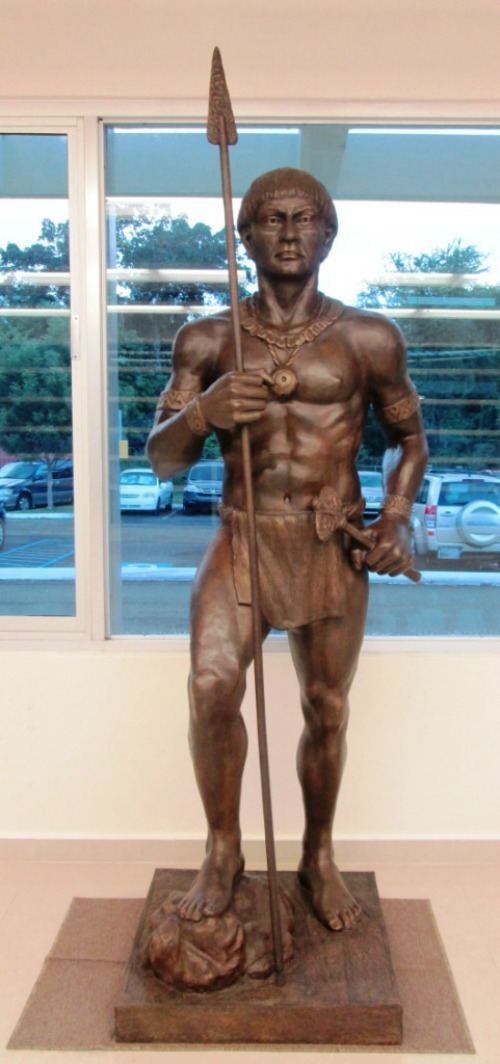 | ||
Died 1510Puerto Rico/"Boriken" Relations Brother of Gueybana (better known as Agueybana II) | ||
Commands held Tainos of "Boriken" | ||
Agüeybaná (died 1510) was one of the two principal and most powerful caciques (chiefs) of the Taíno people in "Borikén" (Puerto Rico) when the Spanish first arrived on the island on November 19, 1493.
Contents
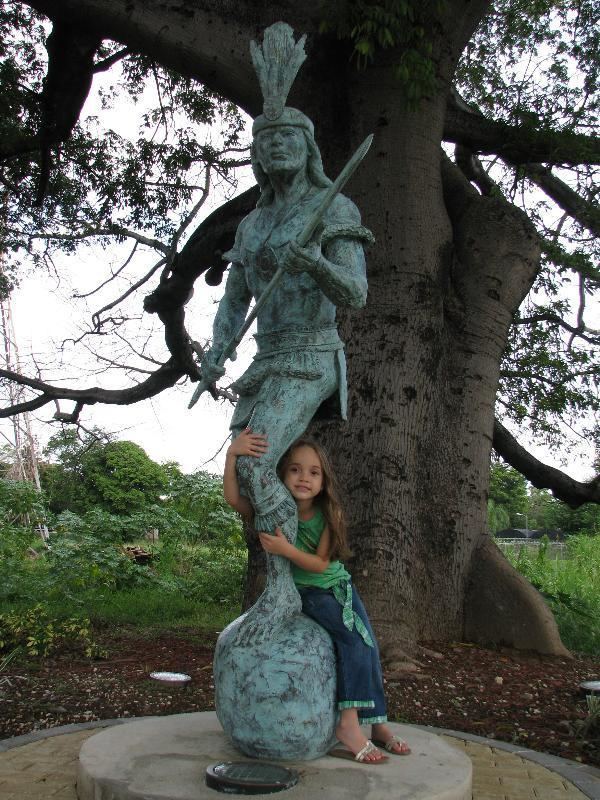
Etimology

Agüeybana, which has been interpreted by 19th and 20th century authors as meaning "The Great Sun", was the hereditary title shared by the family that ruled the theocratic monarchy of Borikén, governing the hierarchy over the rest of the regional chiefs or caciques. Like other nobiliary recognitions within Taíno culture, it was passed down through the maternal bloodline. The Spanish Hispanicized the title to be the equivalent of the European concept of kings, with contemporary writers such as Juan de Castellanos and Gonzalo Fernández de Oviedo y Valdés employing the title of Rey Agüeybana (literally meaning "King Agüeybana") when referring to the second monarch to lead the Taíno during the 1510s. By the 1800s, the terms "king" and "cacique" were used exchangeably by both local and Spanish authors, but a resurgence in the interest concerning Taíno history during the 20th century led to the popularization of native words and the latter term gained more lexical prominence.
Arrival of the conquistadors
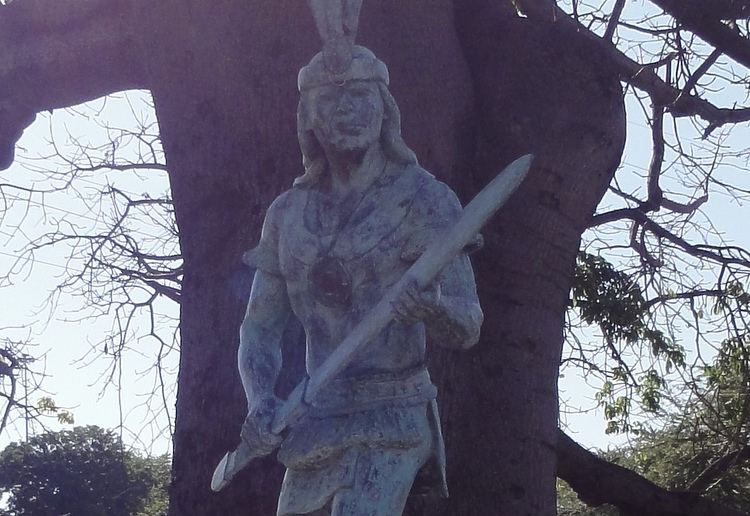
Agüeybaná received the Spanish conquistador Juan Ponce de León upon his arrival in 1508. According to an old Taíno tradition, Agüeybaná practiced the "guatiao," a Taíno ritual in which he and Juan Ponce de León became friends and exchanged names. Ponce de León then baptized the cacique's mother into Christianity and renamed her Inés.
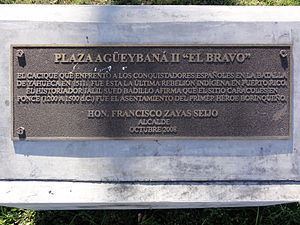
The cacique joined Ponce de León in the exploration of the island. After this had been accomplished, Agüeybaná accompanied the conquistador to the island of La Española (what today comprises the nations of the Dominican Republic and Haiti), where he was well received by the Governor Nicolás de Ovando. Agüeybaná's actions helped to maintain the peace between the Taíno and the Spaniards, a peace which was to be short-lived.

The hospitality and friendly treatment that the Spaniards received from Agüeybaná made it easy for the Spaniards to betray and conquer the island. After a short period of peace, the Taínos were forced to work in the island's gold mines and in the construction of forts as slaves. Many Taínos died as a result of the cruel treatment which they received.
Death and aftermath
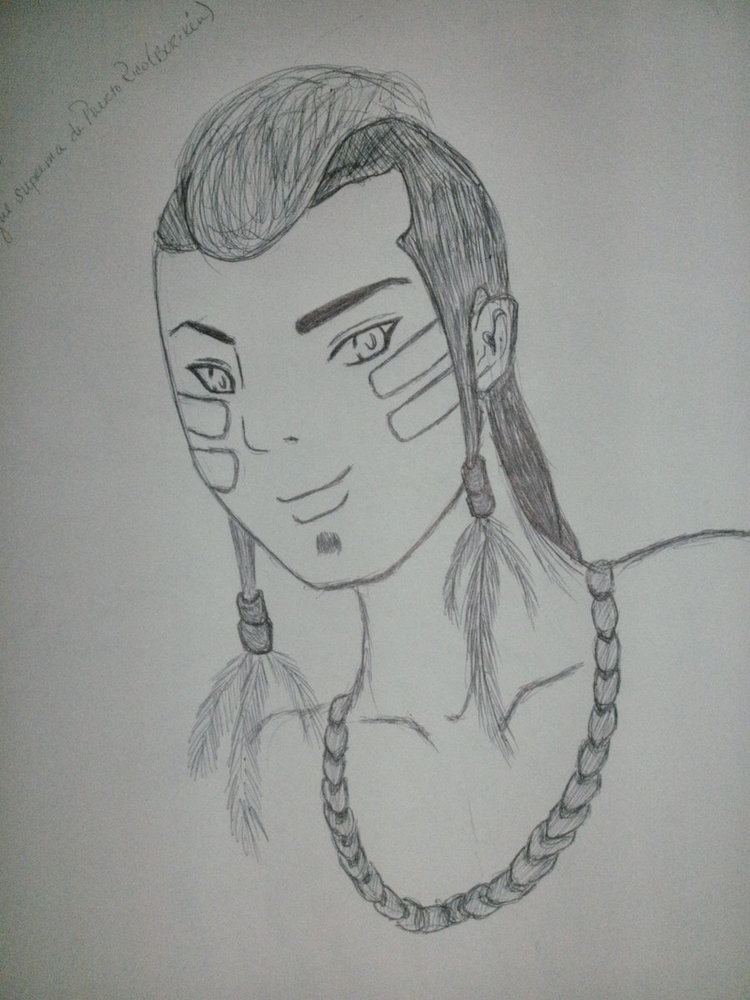
Upon Agüeybaná's death in 1510, his brother Güeybaná (better known as Agüeybaná II) became the most powerful Cacique in the island. Agüeybaná II was troubled by the treatment of his people by the Spanish and attacked them in battle. The Taínos were ultimately defeated at the Battle of Yagüecas.
After this, Taínos in Puerto Rico either abandoned the island, were forced to labor as slaves, or were killed by the Spaniards. Many succumbed to the smallpox epidemic that attacked the islanders in 1519.
Legacy
Agüeybaná is admired in Puerto Rico for his dedication to his people and attempting to keep the peace. Puerto Rico has named many public buildings and streets after him:
Many songs and poems, by poets such as Juan Antonio Corretjer, among others, have been written about Agüeybaná.
